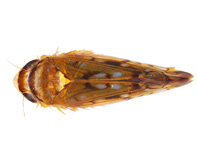Abstract
The imago and nymph of Lestagella penicillata are redescribed based on historic specimens and new material from Table Mountain slopes (Skeleton Gorge and Window Stream), Western Cape, South Africa. A male from Barnard’s syntype series is designated as the lectotype. Wear-and-tear of mouthparts, particularly the mandibles, has led to errors in identification of diagnostic characters for the nymphs in earlier publications. Previous descriptions of the mandibles being atrophied, in terms of dentition, are erroneous. The generic diagnosis of Lestagella is modified to account for these errors and intraspecific variability. Adults are distinguished from other Teloganodidae by the combination of a short, detached iMP vein on the forewing, three caudal filaments and gill socket vestiges on segments II - IV. Nymphs are distinguished from other Teloganodidae by a conspicuous head fringe, lamellate gills on abdominal segments II–IV and a dorso-ventrally flattened body.

